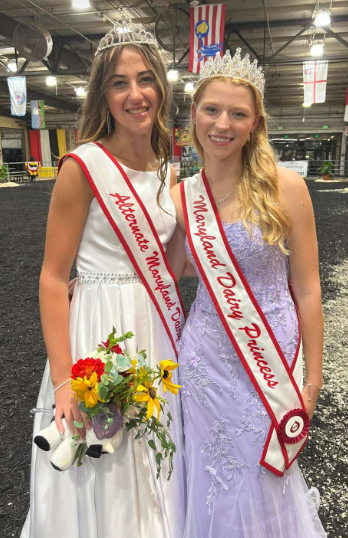Microgreens, cancer fighting plants grown
March 28, 2018
Not just diners at High-end restaurants enjoy microgreens, Steven the bearded dragon enjoy them for his afternoon snack (Photo credits: Aubrey Williams)
Unknown to much of North Harford’s students and staff, right here in school are plants being grown that have properties to fight off cancer cells.
Laura O’Leary the natural resource teacher is working with Senior Gabby Sewell to grow these plants called microgreens.
Microgreens are young greens grown in a short period of time from germinated seeds or as described by O’Leary, “Microgreens are baby plants.”
Often called “vegetable confetti”, these microgreens are used to enhance the color, texture, and flavor of salads and garnish main dishes is many high-end restaurants. Prices of microgreens can range from $30-$50 per pound according to planetfixer.org
When asked about how North Harford got into growing Microgreens O’Leary said, “We are growing microgreens under the training of an organization called City-Hydro, it is a little company in baltimore that grows microgreens to sell to high end restaurants. One of the capstone students, Gabby Sewell, said her dad knew of them and he said she was looking for an SAE and they offered to mentor her. They have one of the bedrooms in their teeny tiny little town house all suited up to grow trays and trays of microgreens every week and they sell them at a fine profit at these trendy restaurants.”
But not only are microgreens trendy they are extremely nutritional. According to WebMD “Researchers found microgreens like red cabbage, cilantro, and radish contain up to 40 times higher levels of vital nutrients than their mature counterparts.”. Also they have been known to have anti-cancer properties, this is because they have a high concentration of a known cancer fighting compound named Sulforaphane.
The easy thing about microgreens is that they germinate between 7-20 days, however they must be sold within 10 days or they go bad. “They grow rooted to a coconut plant and you can sell them as a living plant and you don’t have to worry about the FDA because you’re selling a rooted, living plant.”, explained O’Leary.
Students and teachers alike have been seizing the opportunity to try these microgreens and and it to their salads at lunch, so next urge for a healthy salad stop by O’Leary’s room to see what all these microgreens are about.
















